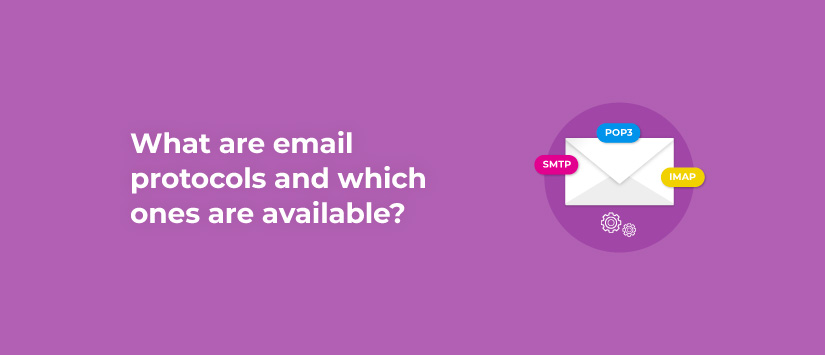Category: Email Marketing

Any email marketer needs to understand how the exchange of messages works from a technical perspective in order to understand deliverability issues. Email protocols allow email managers to communicate with each other and are therefore what make it possible to send and receive messages. In fact, this is the way to distinguish the three protocols that exist: outgoing and incoming.
Simple Mail Transfer Protocol (SMTP) is responsible for sending messages from the sender's computer to the sender's email server and from there to the recipient's server. Along the way, it queries the message header to find out who is sending and to whom it is being sent to check if the domain and user exist.
SMTP is the only protocol available for sending, it is text-based and uses commands such as "MAIL FROM", "RCPT TO" or "DATA" to specify, respectively, the email address of the sender, the recipient or the body of the message.
On the other hand, there is a protocol that extends the possibilities of SMTP to send multimedia content and attachments: the Multipurpose Internet Mail Extension Protocol (MIME). What happens when sending with MIME is that lines are added to the message header such as: "MIME version", "Content type" or "Content description".
The mail ports are the gateways through which each protocol connects and there are different ones depending on the level of security. In SMTP, port 25 is for TLS and 465 for SSL.
Post Office Protocol version 3 (POP3) is responsible for receiving messages, i.e. accessing the recipient's mail server and downloading them to the recipient's computer. By default, messages are deleted once they are on the user's device, but you can change this in the settings if you wish to keep them.
The advantage of downloading them is that they can be consulted even if there is no internet connection (or if it is not very good) and it frees up space on the server (important if the provider sets a limit), the downside is that they are no longer available for consultation from other devices.
The POP3 protocol works with text commands, for example: "USER" and "PASS" to enter the user's data and password or "LIST" to make a list of messages and their size.
Port 110 is the default unencrypted port in POP3 and 995 works with TLS/SSL.
Internet Message Access Protocol (IMAP) is also an incoming mail protocol, but it differs from POP3 in that it is used to access messages from different devices. So, by configuring IMAP in your email manager, the user can download the emails from the list to consult them, organised with the folders and then delete them from that device. If he opens another session on another computer, he will retrieve them all, including the deleted ones, because they are still on the server.
Like POP3 and SMTP, IMAP works with text commands such as "SELECT" to select a mailbox to access the messages or "CREATE" to create one with the chosen name.
The ports in IMAP are also two: 143 without encryption and 993 for TLS/SSL.
Do not miss anything from our blog and join our Telegram https://t.me/acrelianews
Haven't you tried Acrelia News yet?
If you like this post, you will like much more our email marketing tool: professional, easy to use.